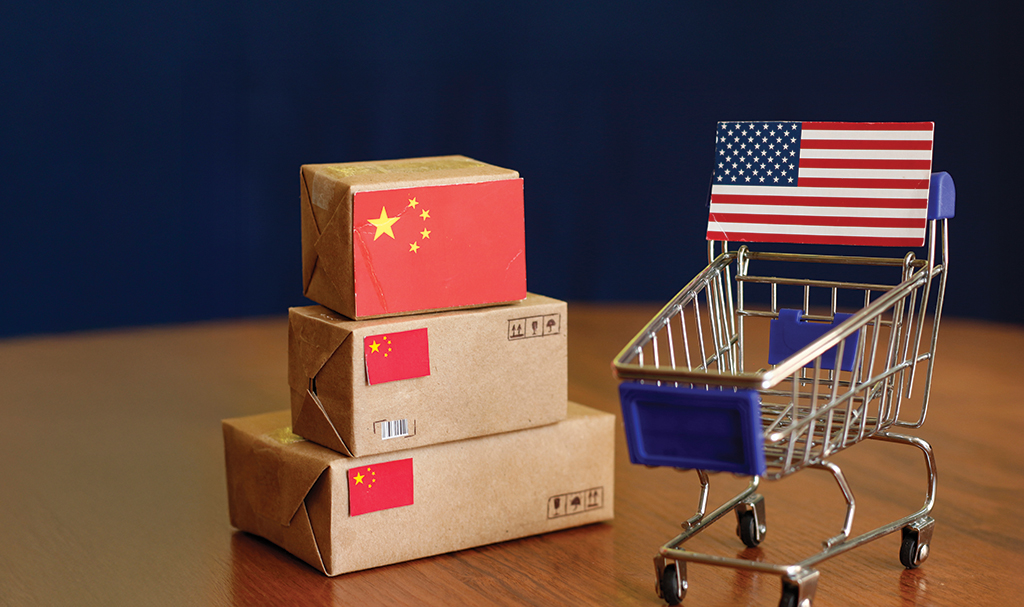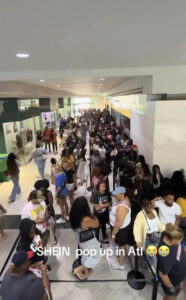
How the Beauty Industry Prepares Amid Tariff-Driven Consumer Shift ?
This year, beauty supply faced major shifts under high tariffs. Rising prices reshaped consumer habits, forcing store owners to rethink operations. As Chinese platforms Temu and Shein saw steep declines, offline stores gained ground through price competitiveness and instant Trial·Exchange·AS.
Moving Beyond Local Rivalry, Redesigning for Online Price Competition
“Only products priced close to online survive now. It’s no longer about being cheaper than the shop next door, but competing with online prices,” said a store owner in Alabama. Customers check prices, shipping, and tariffs on their phones before paying, replacing impulse buys with careful review. In practice, stores align prices within a 0~+5% band of online totals and display dual price tags showing both offline and online prices side by side.
Dual pricing need not be elaborate. Printing and posting screenshots of online totals is enough. Showing comparisons for just a few key items reassures customers they gain more value in-store. What matters is not flashy displays but transparency, proving the owner has already done the comparison.
- Low to mid-low (price fighters): For products with ample stock, match the online lowest price or offer −$1 to draw traffic.
- Mid-range (basket drivers): Care kits lift average spend through stable everyday pricing and 1+1 bundles.
- Premium (value premium): Wigs and human bundles stay within the 0~+5% band, with Instant Try-onExchange·AS highlighting experiential value.
Wholesale Chaos: Another Price Shock Expected in November
In May, a wholesaler shifted production from China to Myanmar to avoid high tariffs, only to return when Myanmar imposed a baseline 40% duty. China currently benefits from a temporary 30% tariff deferment until November 10. Once lifted, imports may again face 30–40% through a 10% reciprocal duty plus an additional 20%. The industry warns of mounting confusion, as special and base tariffs overlap and the final post-November rate remains uncertain.
Shifts in China’s Low-Cost Direct-to-Consumer Platforms
- Opportunities in Offline Retail
“Offline stores were inevitably forced to gain price competitiveness once the exemption ended, but I see it as a positive change overall.”
– Store owner in the West
With rising tariffs and reduced ad spend, Temu and Shein saw double-digit declines in U.S. sales and users. Even shipments via local warehouses lost their edge as price gaps with offline stores and Amazon all but disappeared. This shift, combined with the Immediacy·Expertise·Exchange/AS offered by offline shops, is creating new opportunities.
- Salon Demand Pauses, Customers Turn to Beauty Supply
“Tariffs raised hair prices by over 40%. At first, we considered absorbing part of the cost, but to retain clients, we had no choice but to adopt a ‘BYO (Bring Your Own) hair approach’ instead of raising service prices.”
– Custom wig stylist, Houston
Change is also clear in the salon and stylist market. Until recently, wigs and human hair were ordered in small quantities from China via DHL or FedEx and bundled into service fees. With higher tariffs and shipping delays, that advantage is gone. Some complain that what once arrived instantly now takes 2 ~ 3 weeks and incurs duties, disrupting bookings. Rising costs pushed some salons to require clients to bring their own hair or to offer “hair not included” services, while small operators face staff cuts and downsizing.
This gap is where offline beauty supply steps in. Immediate Pickup·Exchange·AS, card payment, and bundle sales address pain points salons could not resolve through direct import. The shift of salon demand to local stores mirrors the broader return of consumers from Temu and Shein back to offline retail.
- Turnaround Amid Crisis: Shein Pop-Up Buzz
What is notable is that Shein did not remain online-only. In 2023, it partnered with Forever 21 to open pop-ups inside stores. For struggling Forever 21, Shein brought online fandom; for Shein, the nationwide store network filled a gap.
Even after tariff changes, Shein continued to draw crowds with pop-ups and campus tours across several states. The appeal was not just low prices. Photo zones with instant coupon rewards and on-site try-on created immediate experiences and feedback loops that kept customers engaged.
- ©Instagram @atl. Circle 애틀랜타 퍼리미터 몰에서 열린 쉬인 팝업스토어, 4일간 7천 명이 몰려 장사진을 이뤘다.
- ©Instagram @ sheincampus 사진을 공유하고 상품을 받은 참가자
- ©Instagram @ sheincampus 쉬인 2025 캠퍼스 투어 현장
-
- Instant trial + immediate reward
- Shein: Photo zone selfie → $3-5 coupon instantly
- Our store: Mirror setup as photo zone; upload try-on selfie with hashtag → $3 coupon
- Short-term specials & limited quantity
- Shein: 48-72-hour mini drop sales
- Our store: Friday-Saturday “weekend specials” section
- 30-minute mini classes (weekends)
- Shein: Makeup tutorials at beauty bar
- Our store: Saturday 30-minute free class; coupon given for review upload
- Trust + scalability
- Shein: Last countdown, bundle sales, QR code ordering
- Our store: Display last five packs, style bundles available, high-end items QR-orderable to reduce inventory risk
Post-Tariff: How Are Consumers Responding?
A McKinsey survey found 54% of respondents reduced nonessential purchases and 48% cut product variety. By generation, Gen Z was the most willing to embrace change, while baby boomers strongly preferred maintaining the status quo.
- Consumer Behavior Shifts Driven by Tariffs
| Changes in Consumer Behavior (Respondents %/n =2,333) | |
| Reduced nonessential purchases | 54% |
| Reduced number of products bought | 48%
|
| Switched to cheaper brands | 43% |
| Delayed purchases | 40% |
| Purchased secondhand products | 26% |
| Purchased from other stores/sites | 26% |
| Considered country of manufacture | 21% |
| Purchased as early as possible | 20% |
McKinsey & Company, 2025
- Voices from the Field
“High-end human hair wig sales have slowed. Prices fluctuate sharply based on online inventory, while demand is concentrated on low-cost products. Rising demand is also pushing up low-end prices, so it’s not a fundamental solution.”
– Store owner, Virginia–Maryland
“Perhaps because customers’ wallets are thinner, theft has increased.”
– Store owner, East Coast
Store Success Hinges on ‘Operational Strength’
With Chinese wholesale prices up 20~50%, the race to be “cheapest” is over. Sales now hinge on how quickly stores prepare and how well shelves are designed.
As the Shein-Forever 21 partnership shows, online leaders and aging offline brands are combining strengths to build omnichannel strategies. Offline stores must distinguish themselves not by sales alone but through experience, trust, and operational strength.
In the tariff era, survival belongs to stores that evolve beyond selling products to become platforms for building customer relationships.


